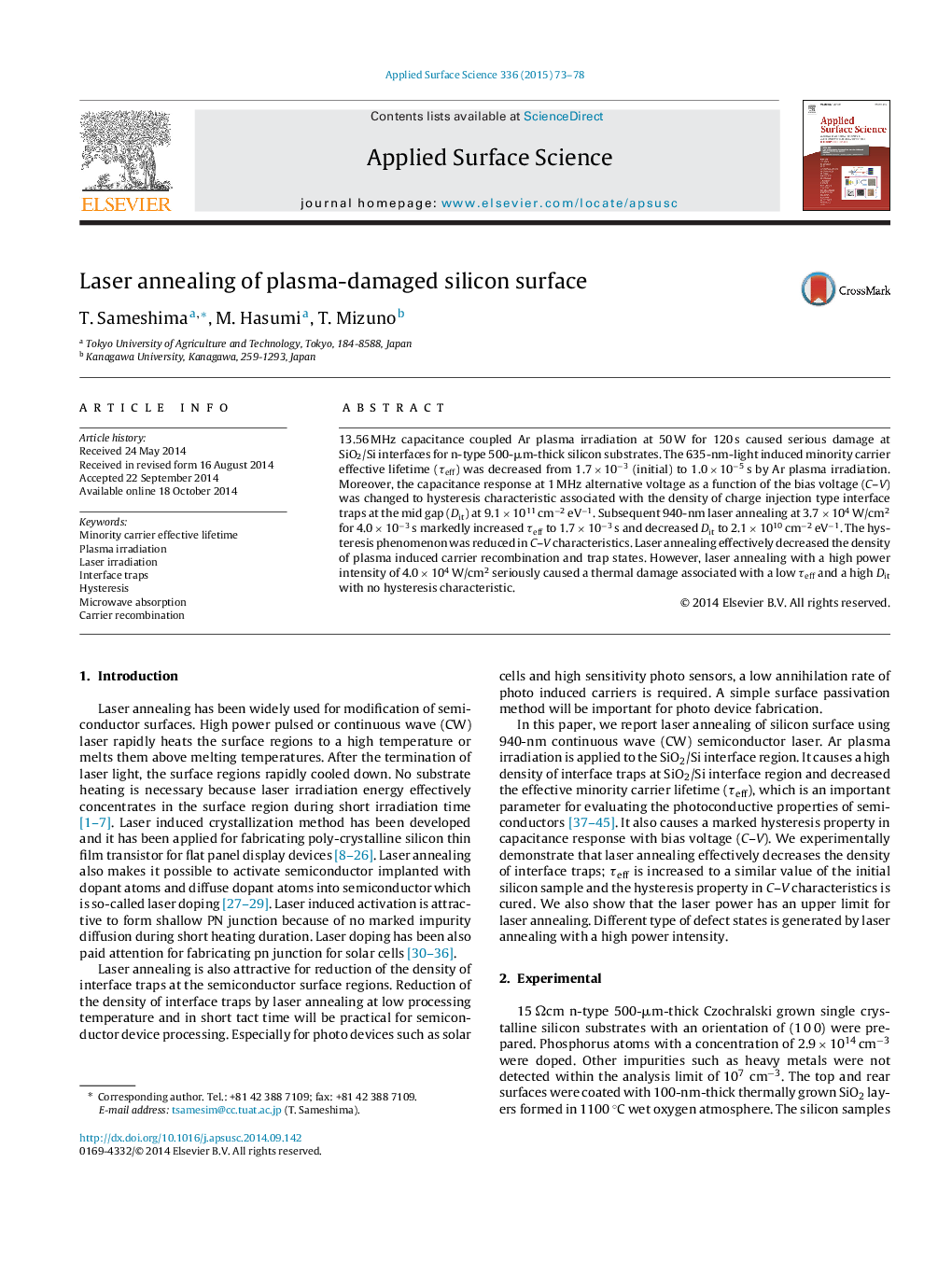| Article ID | Journal | Published Year | Pages | File Type |
|---|---|---|---|---|
| 5358539 | Applied Surface Science | 2015 | 6 Pages |
Abstract
13.56 MHz capacitance coupled Ar plasma irradiation at 50 W for 120 s caused serious damage at SiO2/Si interfaces for n-type 500-μm-thick silicon substrates. The 635-nm-light induced minority carrier effective lifetime (Ïeff) was decreased from 1.7 Ã 10â3 (initial) to 1.0 Ã 10â5 s by Ar plasma irradiation. Moreover, the capacitance response at 1 MHz alternative voltage as a function of the bias voltage (C-V) was changed to hysteresis characteristic associated with the density of charge injection type interface traps at the mid gap (Dit) at 9.1 Ã 1011 cmâ2 eVâ1. Subsequent 940-nm laser annealing at 3.7 Ã 104 W/cm2 for 4.0 Ã 10â3 s markedly increased Ïeff to 1.7 Ã 10â3 s and decreased Dit to 2.1 Ã 1010 cmâ2 eVâ1. The hysteresis phenomenon was reduced in C-V characteristics. Laser annealing effectively decreased the density of plasma induced carrier recombination and trap states. However, laser annealing with a high power intensity of 4.0 Ã 104 W/cm2 seriously caused a thermal damage associated with a low Ïeff and a high Dit with no hysteresis characteristic.
Keywords
Related Topics
Physical Sciences and Engineering
Chemistry
Physical and Theoretical Chemistry
Authors
T. Sameshima, M. Hasumi, T. Mizuno,
